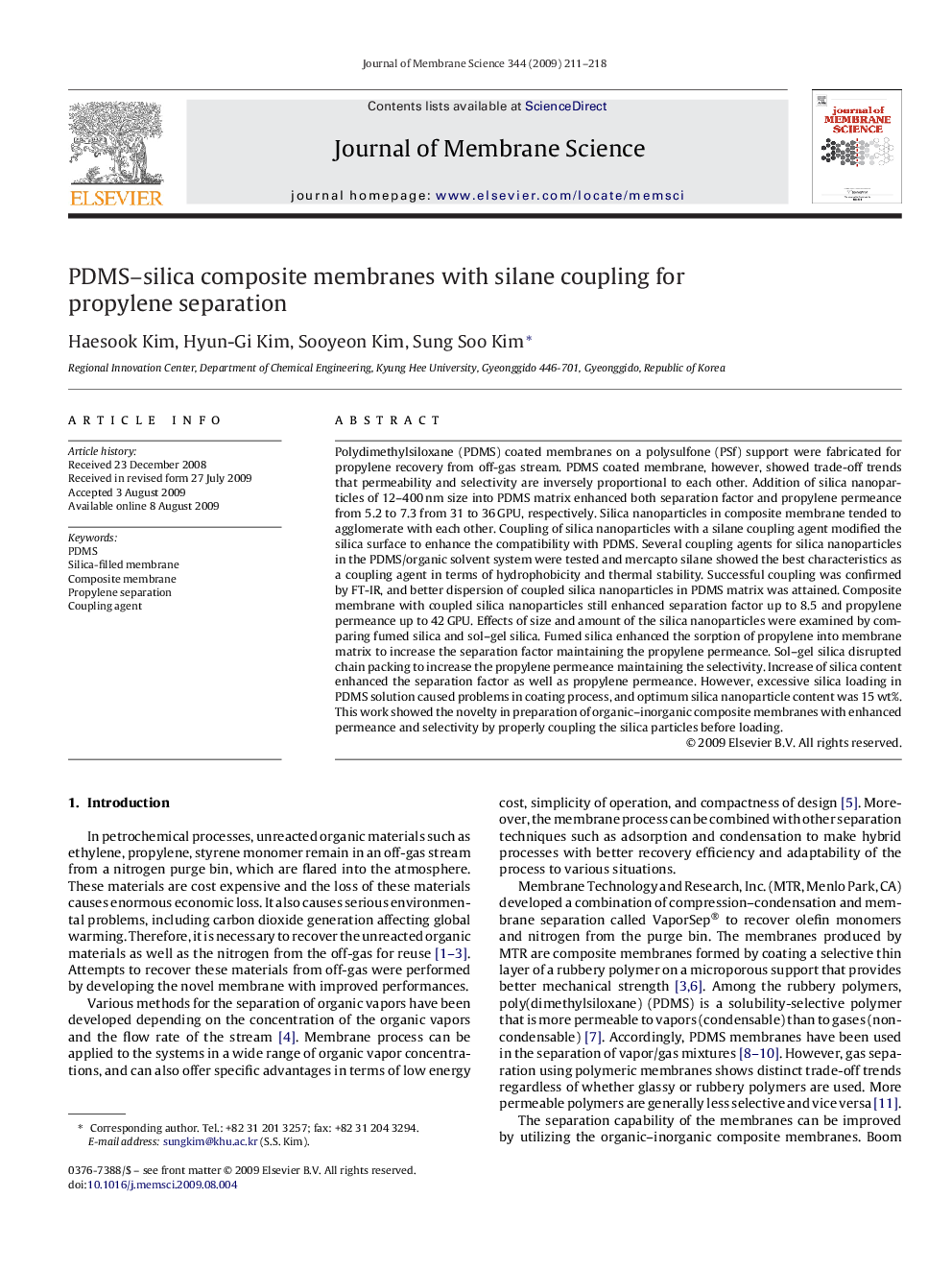| کد مقاله | کد نشریه | سال انتشار | مقاله انگلیسی | نسخه تمام متن |
|---|---|---|---|---|
| 636744 | 1456134 | 2009 | 8 صفحه PDF | دانلود رایگان |

Polydimethylsiloxane (PDMS) coated membranes on a polysulfone (PSf) support were fabricated for propylene recovery from off-gas stream. PDMS coated membrane, however, showed trade-off trends that permeability and selectivity are inversely proportional to each other. Addition of silica nanoparticles of 12–400 nm size into PDMS matrix enhanced both separation factor and propylene permeance from 5.2 to 7.3 from 31 to 36 GPU, respectively. Silica nanoparticles in composite membrane tended to agglomerate with each other. Coupling of silica nanoparticles with a silane coupling agent modified the silica surface to enhance the compatibility with PDMS. Several coupling agents for silica nanoparticles in the PDMS/organic solvent system were tested and mercapto silane showed the best characteristics as a coupling agent in terms of hydrophobicity and thermal stability. Successful coupling was confirmed by FT-IR, and better dispersion of coupled silica nanoparticles in PDMS matrix was attained. Composite membrane with coupled silica nanoparticles still enhanced separation factor up to 8.5 and propylene permeance up to 42 GPU. Effects of size and amount of the silica nanoparticles were examined by comparing fumed silica and sol–gel silica. Fumed silica enhanced the sorption of propylene into membrane matrix to increase the separation factor maintaining the propylene permeance. Sol–gel silica disrupted chain packing to increase the propylene permeance maintaining the selectivity. Increase of silica content enhanced the separation factor as well as propylene permeance. However, excessive silica loading in PDMS solution caused problems in coating process, and optimum silica nanoparticle content was 15 wt%. This work showed the novelty in preparation of organic–inorganic composite membranes with enhanced permeance and selectivity by properly coupling the silica particles before loading.
Journal: Journal of Membrane Science - Volume 344, Issues 1–2, 15 November 2009, Pages 211–218